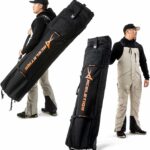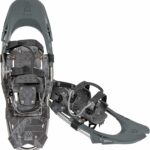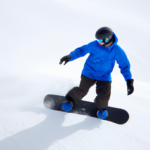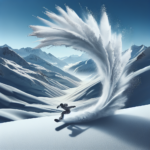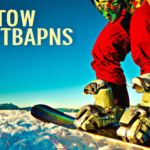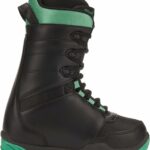Ever thought of swapping your mundane morning routine for the thrill of maneuvering a snowboard down a frosty slope? If you’ve been dreaming of carving up the mountain and wondering how to get started, you’re in the right place. “How To Start Snowboarding?” is your guide to embarking on this exhilarating winter sport journey. You will find practical tips, exciting insights, and the essentials you need to kick off your snowboarding adventure with confidence and style. Let’s hit the slopes!
Understanding the Basics of Snowboarding
Ready to challenge yourself with the exciting sport of snowboarding? Let’s make sure you’re fully prepared for this thrilling adventure.
Knowing what snowboarding is
Snowboarding can be simply described as surfing on snow. Invented in the 1960s, this outdoor winter sport involves descending a snow-covered slope on a snowboard, a flat board with bindings for attaching boots. Unlike skiing where you have a ski boot attached to each foot, snowboarding demands you to stand sideways on a single board. Once you get the hang of it, you’ll experience wonderful moments gliding down the snow-covered mountains like a bird!
Understanding the health benefits of snowboarding
Before getting started, you might want to know just how good snowboarding is for you. The answer is—it’s amazingly beneficial! While you’re having fun, you’re also getting a full-body workout. It strengthens your core, works out your leg muscles and tests your cardio fitness. Plus, it’s a fantastic way to get some sunlight and boost your mood during the winter.
Recognizing the potential risks involved
Awareness is key to safety. Snowboarding carries its own risks, much like any other extreme sport. Injuries during snowboarding can range from minor bruises to severe fractures. That’s why it’s essential to always wear proper equipment and follow safety guidelines. Remember, bravery is not ignoring danger, but facing it with caution and preparedness.
Choosing the Right Equipment
Picking the right gear can drastically impact your learning curve on the slopes.
Deciding between different types of snowboards
Your first task will be to choose your snowboard. There are three main types; freestyle, freeride and alpine snowboards. Freestyle boards are lighter and shorter, perfect for tricks and jumps. Freeride boards are versatile for any kind of terrain, while alpine boards are designed for speed. Your choice should reflect the kind of snowboarding you aspire to do.
Getting the right bindings
Bindings, the components that secure your boots to the board, are a crucial part of your set-up. They come in different sizes and styles, each offering varying levels of support and flexibility. It’s important to choose bindings that provide a comfortable and secure fit with your specific snowboard and boots.
Selecting the appropriate boots
Next, you’ll need to invest in a good pair of boots. When trying on snowboarding boots, seek a snug, but comfortable fit. Remember, your snowboarding boots will be your direct connection to your board, so ensuring a good fit is essential to maximizing your control over your ride.
Purchasing essential safety gear
Before you head out to the slopes, there are some additional safety gear you should have. A helmet is non-negotiable. Make sure it fits properly and is specifically designed for snowboarding. Wrist guards, knee pads, and a quality pair of goggles are also essential for your protection and comfort.
Selecting Appropriate Clothing
Appropriate clothing is crucial for a successful day on the slopes.
Understanding the importance of layering
The first rule of dressing for snowboarding is to layer up. Start with a moisture-wicking base layer, then add an insulating mid-layer, and top it all off with a waterproof outer layer. This allows you to adapt to changing weather conditions throughout the day.
Choosing the right materials
Try to avoid cotton as it absorbs and holds onto moisture, which can make you cold. Instead, opt for materials like polyester, nylon, or wool which are designed to keep you warm and dry.
Getting a good pair of gloves
Don’t forget the gloves. A good pair of water-proof and insulated gloves is indispensable to protect your hands from the cold and wet conditions.
Selecting suitable eyewear
Eyewear is not just for looking cool on the slopes—it’s a necessity. Choose a pair of goggles that protect your eyes from UV rays and increase your visibility by reducing the sun’s glare on the snow.
Preparing Physically for Snowboarding
Snowboarding is physically demanding, so it’s important to prepare your body in advance.
Incorporating cardiovascular exercises
Snowboarding is a demanding sport on the cardiovascular system. So, building endurance through cardio exercises is crucial for stamina on the slopes.
Building strength and flexibility
Strength training helps build resilience in your muscles which, in turn, helps prevent injuries. Also, improving your flexibility will provide you with better balance and control while snowboarding, making your ride down the slope smoother.
Understanding the importance of balance
Balance is vital in snowboarding. Exercises that engage your core, such as yoga and Pilates, can help improve your equilibrium, control, and overall performance.
Learning Basic Snowboarding Skills
To fully enjoy the thrill of snowboarding, you need to master some fundamental skills.
Understanding how to stand on a snowboard
Getting on the board is where you start. You either have a ‘regular’ stance (with your left foot in front) or a ‘goofy’ stance (with your right foot in front). Identify which one feels more natural and then practice standing, and getting a feel for your balance.
Learning how to glide and slide
Next, you’ll want to practice sliding down a gentle slope with one foot strapped in your board. Once you get comfortable with that, you can strap both feet in and practice some basic glides and slides.
Mastering turns and stops
Turning is a key skill in snowboarding. Begin with simple turns and as you get more control and confidence, you can start trying to link turns and work on your stops as well.
Finding a Good Location to Learn
The place where you learn snowboarding can play a significant role to shape your experience.
Considering physical features of a location
A gentle, wide open slope is the ideal place to start. It should have enough slope to allow you to move, but not so steep that you’ll be intimidated or moving too fast.
Checking for safety features
Make sure the location you choose is safe. It should be free from obstacles like trees and rocks. It’s also important to ensure that it offers easy access to lifts and doesn’t lead into hazardous areas.
Ensuring availability of professional instructors
Having access to professional instructors can make all the difference when you’re learning. Even if you’re on a beginner’s slope, it’s still helpful and safer to have an expert showing you the ropes.
Taking Professional Lessons
Professional lessons are invaluable for beginners.
Understanding the benefits of professional instructions
A professional can provide you with invaluable tips and techniques that you may not know about or understand from reading online. They can also instantly correct any mistakes or bad habits that you might be forming.
Knowing what to look for in an instructor
Look for instructors with good communication skills, patience, and a positive attitude. They should be experienced snowboarders themselves and, more importantly, certified to teach.
Managing budget for lessons
Snowboarding lessons can be expensive, but your safety is worth the investment. Many places offer group lessons which can be more affordable than private ones.
Practice and Improve
As you’ll quickly realize on the slopes, snowboarding is all about constant improvement.
Putting in regular practice hours
The key to mastering snowboarding—like anything else—is practice. You might start with lessons, but you should set aside regular time to practice what you learn. It’s ok if you fall, everyone does. Just get back up and try again!
Gradually taking on more challenging slopes
As your confidence builds, you can gradually take on more challenging slopes. This will not only keep snowboarding exciting but also push your skills to new heights.
Joining snowboarding groups or clubs
Joining a snowboarding group or club can provide a supportive and fun environment to nurture your skills. Plus, you will get lots of tips from other riders and it can make your snowboarding experience a social one too.
Safety Precactions
Safety is paramount when you’re on the slopes.
Knowing about mountain safety
Understanding mountain safety protocols and etiquette is significant. Always stay within the marked boundaries, avoid closed areas and make sure to respect other slope users’ space.
Understanding the importance of helmets and other safety gear
A helmet is not optional—it’s a must. Same goes for wrist guards, knee pads, and tailbone protectors. These pieces of equipment protect you from severe injuries in case you fall or collide with something or someone.
Learning about potential dangers and how to handle them
Awareness of potential dangers like avalanches, hypothermia and sunburn is crucial. Make sure you know how to handle these situations by taking avalanche safety courses, dressing appropriately for the weather, and applying UV protection cream.
Expanding Snowboarding Experience
As you continue snowboarding, consider expanding your skills and experiences.
Exploring other forms of snowboarding
Beyond freeriding, you can explore other forms of snowboarding like freestyle, racing, or even backcountry boarding. Each provides a unique experience and expands your skills.
Entering amateur competitions
Once you’ve got the basics down, competitions can be a fun way to challenge yourself. They can also help you connect with a wider community of snowboarders.
Snowboarding in different locations and conditions
Every slope is different, so is every snow condition. Try snowboarding in different locations and conditions. This will not only challenge you but add to your collection of memorable experiences.
Snowboarding is an exhilarating journey. It’s rewarding, exciting and full of opportunities to learn and grow. So bundle up, gear up, and hit the slopes!
- What Snowboard Bindings Should I Get? - January 23, 2024
- What Size Screws For Snowboard Bindings? - January 23, 2024
- How To Snowmobile On Water? - January 23, 2024


